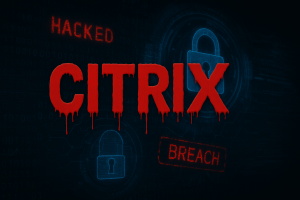
A Growing Crisis in Healthcare Cybersecurity
Imagine walking into a hospital—seeking care, comfort, and answers—only to find that the very institution you trust with your life has lost control of your most personal information. That’s the harsh reality facing hundreds of thousands of patients following the McLaren Health Care breach.
Healthcare organizations today are in the crosshairs of cybercriminals. As hospitals and clinics rapidly embrace digital tools to deliver faster and more connected care, they’re also inheriting a new kind of vulnerability. Late in 2023, McLaren, a nonprofit system serving Michigan communities, confirmed it had suffered a significant cyberattack—one that compromised the records of nearly 743,000 people.
But this isn’t just about numbers or networks. This is about real people whose lives are now affected in very real ways.
What Happened? A Closer Look at the McLaren Data Breach
In August 2023, unusual activity within McLaren’s internal systems raised alarms. By October, the troubling truth came to light: cybercriminals had infiltrated files containing protected health information (PHI).
Let’s be clear—this wasn’t just spreadsheets and server logs. This was deeply personal:
- Names and dates of birth
- Social Security numbers
- Insurance and billing details
- Medical records, diagnoses, and treatment notes
From what we know, the attackers didn’t stop at encrypting files. They also made off with sensitive data, likely using the threat of exposure as leverage. Whether McLaren paid a ransom or not is still unclear, but for the affected patients, the damage is already done.
More Than Just Numbers: The Human Side of a Breach
It’s easy to read “743,000 patients” and gloss over it. But each of those entries in a database represents someone with hopes, fears, and a story.
Someone recovering from surgery now has to worry about their identity being stolen. Someone undergoing treatment who didn’t expect their health records to end up in the wrong hands. Someone who just wanted to get better—and is now dealing with a data nightmare instead.
These are real people. And when their private information is mishandled or exposed, it isn’t just inconvenient—it’s deeply personal. It can feel like a betrayal.

Why Healthcare Keeps Getting Hit?
Sadly, healthcare data has become a high-value target. Criminal groups know that hospitals operate under pressure, and that they hold the kind of detailed personal records you can’t easily change like a password.
Here’s why the sector remains a top target:
- Urgency: When systems go down, patients suffer. That pressure can force quick, costly decisions.
- Legacy systems: Outdated software often lacks the defenses needed to fend off modern threats.
- Limited budgets: Healthcare leaders are pulled in many directions, and cybersecurity can get pushed down the list.
McLaren’s breach is yet another example of how attackers are exploiting these gaps.
A Worrying Trend: McLaren Isn’t Alone
What happened at McLaren wasn’t an anomaly. In 2023 alone, over 500 breaches hit U.S. healthcare providers, compromising the data of more than 100 million people.
Some high-profile incidents include:
- HCA Healthcare is exposing millions due to a server misconfiguration.
- Prospect Medical Holdings is temporarily shutting down hospital operations.
- CommonSpirit Health is dealing with delays and outages affecting patient care.
Each event chips away at public trust and highlights the urgent need for stronger, more resilient systems.
What Healthcare Leaders Can Do Right Now
Cybersecurity can no longer be treated as a background concern. It has to be part of the core mission to protect patients. So, what can healthcare leaders do today to reduce their risk?
First, start by recognizing that cybersecurity is a form of patient care. Just as we protect patients from infection, we must protect their information. Regular assessments of your digital infrastructure, vendors, and workflows are essential to identify blind spots that may otherwise go unnoticed.
Adopting a Zero-Trust security model where access isn’t assumed, even within your network, helps block potential threats before they escalate. The idea isn’t to create paranoia but to build precaution into every system interaction.
Speed also matters. Invest in tools and teams that can recognize unusual activity and respond before damage spreads. Technology should complement trained people—staff members who know how to recognize phishing emails or avoid accidental exposures.
And never underestimate the power of education. The more your team knows, the safer your systems will be.
Protecting Patients, Preserving Trust
The McLaren data breach isn’t just another news story; it’s a serious reminder of how connected patient safety and cybersecurity are. When that connection breaks, trust can vanish fast.
We can’t wait until the next attack to take action. Keeping health data safe isn’t about being flawless; it’s about staying ready, taking responsibility, and putting people first.




